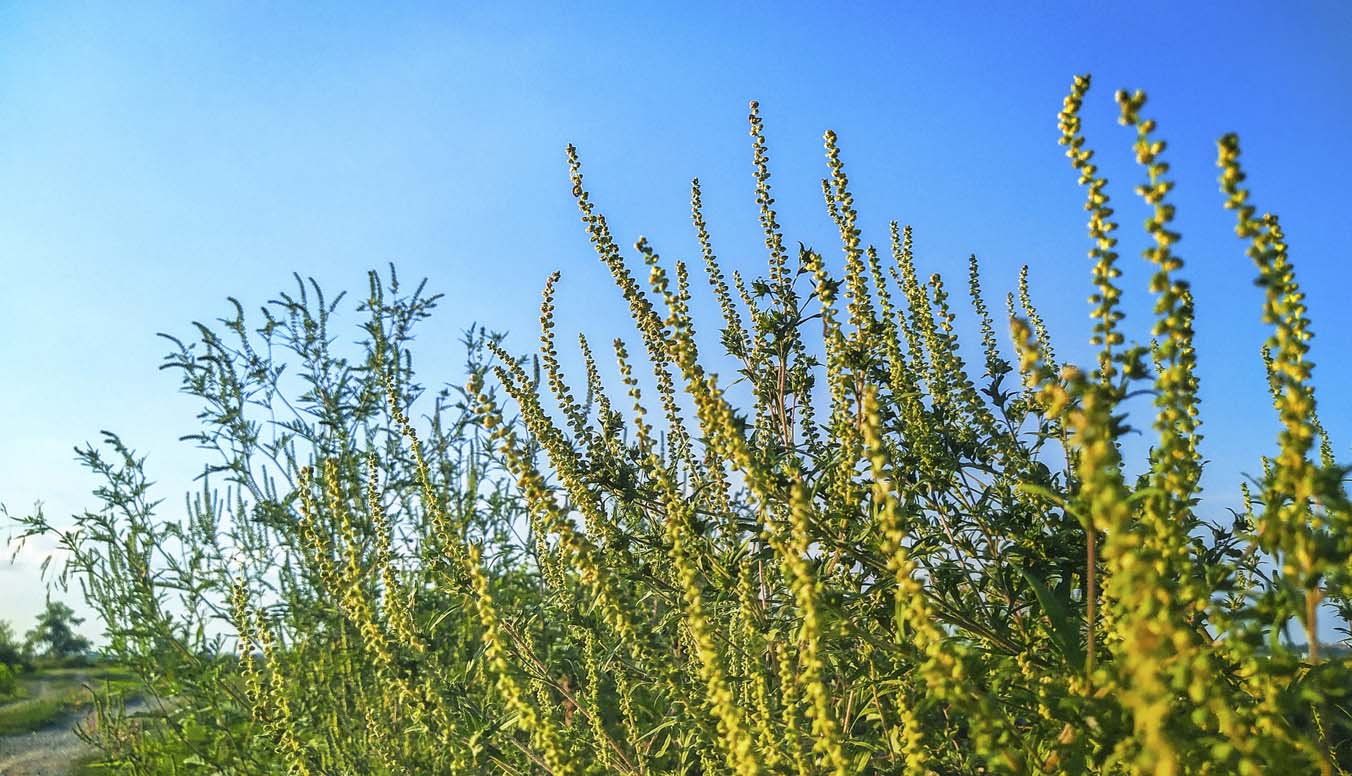Managing Light: Kill Weeds or Stimulate Crops
Every farmer spends a lot of time, energy, resources trying to find ways to reduce or eliminate troublesome weeds in their fields. Weeds compete with crops for water, nutrients, and even sunlight; reducing crop yields by as much as 30% nationwide. Chemical weed control has been the most commonly used weapon of choice. Now farmers may have a completely different tool called blue wave light.
A company located in Xenia, Ohio, called Global Neighbor, is run by Jon Jackson. They have developed a weed inhibitor using mid-infrared blue light wavelengths to treat weed seed. The weeds seed remains viable, but the weed seed can not germinate. The blue wavelength damages the seed cells where germination occurs. A weed seed’s first root, called a radicle, does not grow so the seed eventually dies. Global Destroyer calls their new invention a weed destroyer and it is mounted on the back of a combine. As the weed seed and chaff passes through the combine, the weed seed is terminated by short bursts of blue light. Their success rate is about 80 to 90% reduction in weed seed germination the following year. It is currently being used on wheat and soybean fields in the USA and Canada.
The system warms up the seed then flashes it for a few seconds with a blue infrared light that inactivates the weed seed. It was first used at Edwards Air Force Base in California to kill tumbleweed seed. Now the technology has been adapted to kill weed seed in the Midwest and North America. All seeds need certain spectrums of light to germinate and grow, but too much light can damage plants, especially if it is at the right range of light, the mid-infrared spectrum. If used on a combine, over time, less and less viable seed will be produced which will reduce the weed seed population and weed damage.
The same technology can also be used to speed up crop germination using the low light spectrum. Researchers found that if they dialed back the blue light after warming the seed, it increased weed seed germination and made them germinate and grow faster. On hay and grain crops, they started by treating alfalfa, wheat, soybeans, and corn seed. Once stimulated with the right type of light, plant seeds germinate faster and growth more robust quicker, even when soil temperature may be less than ideal: cool, cold, wet or dry. They found the extra growth led to 1- 1.2 bushels more soybeans in their initial tests.
The researchers are also using this technology as a non-chemical way to burndown existing weeds or cover crop vegetation. Pesticides or weed killers can have many negative effects on the environment, especially to fish, wildlife and even humans when they get into the air, water, or food we eat. Finding a non-chemical solution to fighting weeds or getting crops to grow faster may be a cheaper and safer alternative.
For home owners, Global Neighbor developed a battery-operated spot treatment for single weeds using a high intensity short burst of wavelengths to kill the existing weed vegetation. The same process can also be used to burn down plants (weeds or cover crops) in a field. The weeds or cover crops take a couple of days to die, but the growth pattern is messed up, so the plant eventually dies.
Farmers currently may have three ways to utilize this technology. First, as an addition to their combine or harvesting equipment to terminate weeds seed viability. Second, by pre-treating crop seed with beneficial low intensity light to speed up germination and plant growth when planted. This can help no-till and cover crop farmers especially by getting crops out of the ground when soils are cool, cold, wet, or even a little dry. The faster and higher plant growth may even increase crop yields slightly. This technology may even be adapted to cover crop seed to get faster fall germination. Third, the blue light technology can be used to burn down existing growing weeds or cover crop vegetation, without using chemicals. This technology would be directed at the weeds or cover crops without harming the grain or forage crop. This process can easily terminate herbicide resistant weeds economically while keeping the environment safe.
While our spring grain crops are finally getting planted and starting to grow, the germination and growth has been slow. Cold night temperatures and now drier, hot day time temperatures have crops struggling to get a fast start. The weeds seem to be thriving as much as the crops. Some of this new technology will be quickly adapted once it is perfected. The sooner the better!
